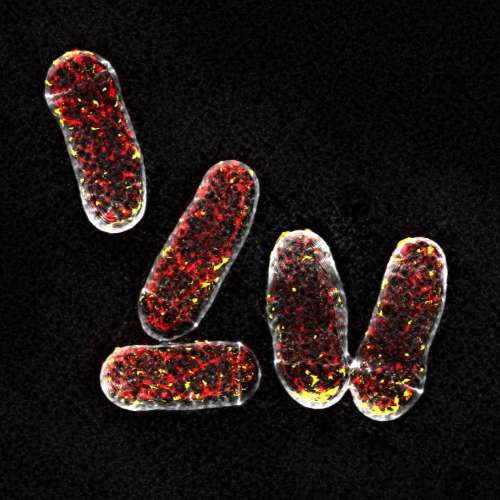Animal and yeast cells all contain a network of filaments known as the actin cytoskeleton that helps to maintain cell shape. When a cell grows, it needs to carefully regulate its actin cytoskeleton to allow the cell to increase in size.
Motors (known as myosin proteins) run long the actin filaments in the cytoskeleton to move cargos around the cell and to help reorganise the cytoskeleton architecture. Their control is important for the correct functioning of a healthy cell and poorly regulated control is a symptom of human disease including many types of cancer. Recent work published by the Mulvihill lab has given new insights into the control of the myosin I protein from fission yeast which is a useful model for human cells. They have discovered that under certain environmental conditions a protein kinase complex called TORC2 is responsible for adding phosphate groups to myosin I which changes the shape of the ‘lever arm’ part of the protein structure which in turn affects how the motor region pushes against the actin filament. This shape change also affects how the protein calmodulin binds to the lever arm region and hence how it regulates myosin function and the wider actin cytoskeleton.
These discoveries on how the growth of the actin cytoskeleton is controlled could lead to the development of new treatments for human disease in the future.

